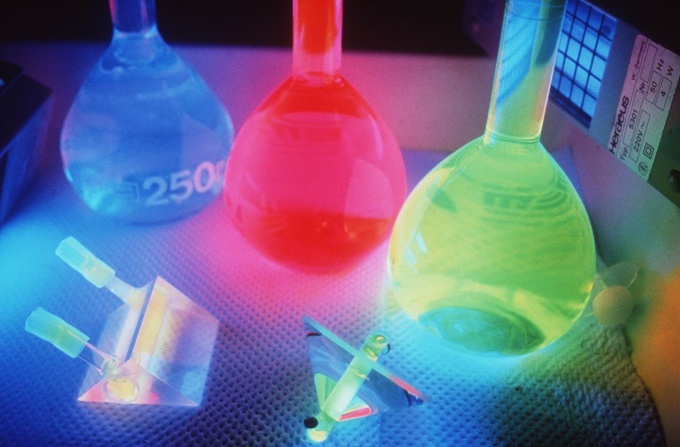Instruction
1
Get this stuff either by the action of gaseous chlorine on iron filings (preferably sawdust):
2Fe + 3Cl2 = 2FeCl3Либо by oxidation of ferrous chloride with chlorine:
2FeCl2 + Cl2 = 2FeCl3
2Fe + 3Cl2 = 2FeCl3Либо by oxidation of ferrous chloride with chlorine:
2FeCl2 + Cl2 = 2FeCl3
2
When you use as a "protectant" has a significant advantage over concentrated nitric acid during this etching does not form toxic oxides of nitrogen, primarily the famous "Fox tail" - NO2! However, dissolving the anhydrous chloride , the iron is not so easy.
3
Often, especially when used in Amateur practice, it either dissolves with difficulty, or when dissolved forms a fine suspension, which is very distracting. Because of her, there are defects etching – "naprotyv". How to deal with this problem? Right to dissolve!
4
Use no more than 1 part ferric chloride to 3 parts water (by weight). The water should be hot. Of course, as clean as possible, ideally distilled. The tank shall be glass or ceramic (in extreme cases, plastic, that can withstand high temperature).
5
Add chloride of iron in hot water in small portions, with vigorous stirring. Many inexperienced fans do the opposite: pour water in the total weight of ferric chloride, and wonder why it turns out some nonsense! The dissolution process is accompanied by a turbulent gas, and these gases present toxic chlorine, so it's best to do everything under the hood, or at least outdoors.
6
After dissolve the last portion, we have to wait at least few hours (preferably a day). During this time, fall a precipitate which is separated by filtration. A solution of ferric chloride - transparent dark brown liquid can be stored in a clean plastic container almost indefinitely.
7
In some cases, if the dissolution is with great difficulty, you can try to acidify the solution by adding approximately 10% (of the total weight of ferric chloride) hydrochloric acid. As a rule, this helps.
Useful advice
Ferric chloride finds wide application, mainly the etching of printed circuit boards. Can also be used when cleaning industrial water and wastewater, as a more effective coagulant compared to aluminium sulphate. Used as catalyst in some organic synthesis, but also in the construction business (Supplement to Portland cement).
